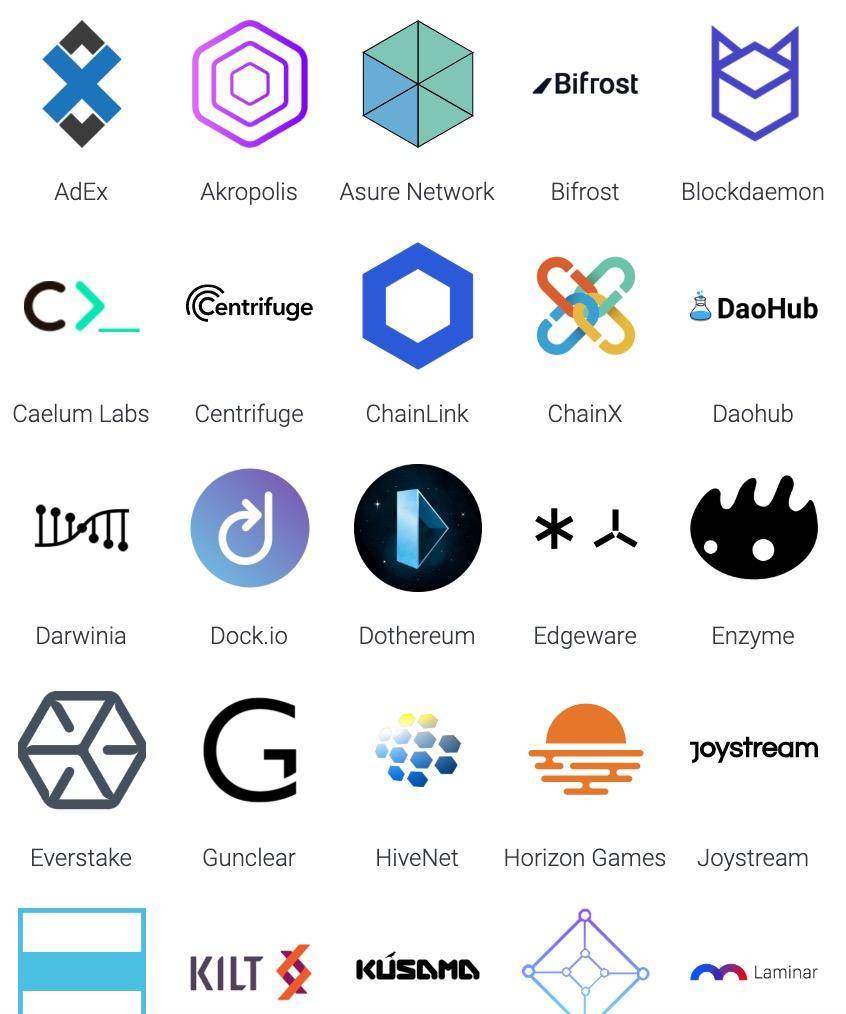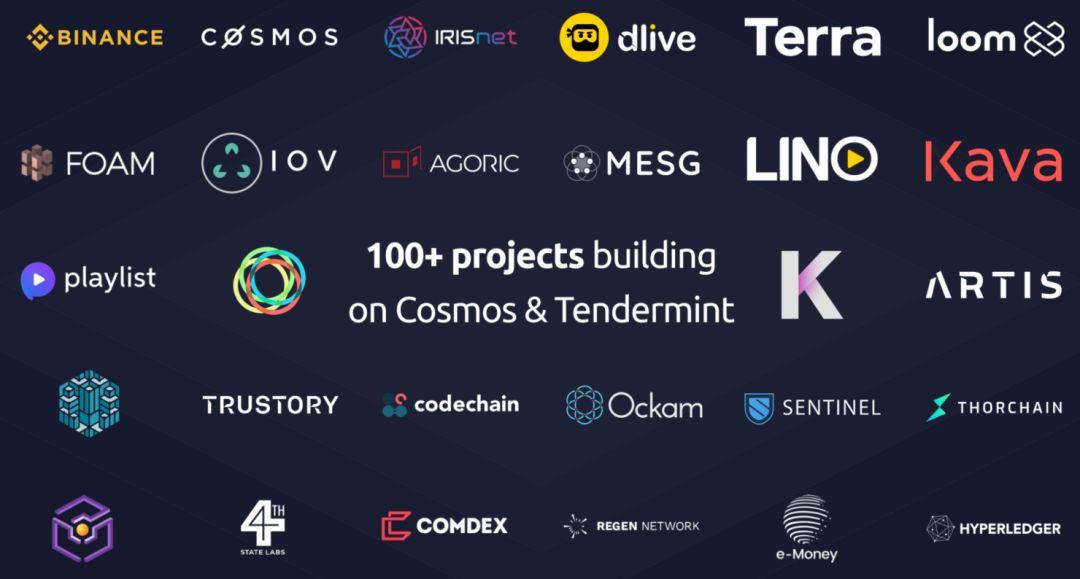Looking ahead to DApp 2020: from smart contracts to application chains

In ancient Germany, there was a master swordsman named Michel Hunter. His "Art Fencing 100" describes various techniques of using swords. When it comes to the last 100 strokes, Michelle's style of painting changes suddenly, depicting There was a crushing battle of the swordsman against the master of swordsmanship, with a self-deprecating comment: "The times have changed, my lord."
1. What is DApp?
DApp stands for Decentralized Application. DApp reduces the cost of user trust by constructing verifiable rules (mathematics / computer science / cryptography / economics) and promotes an efficient market. The rules in the DApp are open and transparent, and everyone can choose to participate voluntarily, voluntarily withdraw, and can benefit as the system network effect increases. There are currently two mainstream approaches to DApp development: one is Ethereum-based smart contract development, and the other is Substrate / Cosmos-SDK-based application chain development.
- Technical Articles | What are the bottlenecks and thresholds for developing Dapps on Ethereum?
- Coinbase CEO: the next decade of cryptocurrencies
- From Web2.0 to Web3.0: Is Web3.0 a wake-up call or an alarmist?
2. What are the current problems with DApp development based on smart contracts?
Most DApps in the past were developed on Ethereum because this is the simplest and most practical way-using smart contracts. Ethereum as a developer encapsulates the network layer and consensus layer. Developers only need to run in the Ethereum Virtual Machine (EVM) after development. It is especially suitable for small applications or proof-of-concept prototypes. But current DApp development will encounter several problems:
- Scalability: The smart contract platform has low scalability, and DApps need to compete with other DApps for resources. The main source of congestion in smart contract platforms is large-scale transfers and transactions. When explosive applications appear, users' transfers will slow down and transfer fees will increase exponentially. Typical events such as fanatic ICOs, phenomenon games like CryptoKitties, Fomo3D, and funds FairWin, etc.-Beginning in early September this year, FairWin's daily gas consumption accounts for nearly 30-40% of the entire ETH network, with a single day peak of more than 500 ETH. As of October 1, the cumulative amount of Gas consumption totaled up to 8691 ETH , Worth more than 10 million yuan.
- Interoperability: DApps on the smart contract platform can call other smart contracts in the platform, but cannot interact with the blockchain outside the platform.
- Speed: Ethereum Virtual Machine (EVM) status update is slow, which is difficult to accept for applications that require frequent upgrades and high-quality DApp user experience (verifiable, no delay).
- On-chain governance: Smart contract platforms do not support on-chain governance of DApps. Vitalik once mentioned that he believes that the governance method should be "established roadmap, consensus among core development teams, token holder voting, and protection against witch attacks. The voting system, established specifications, and other factors determine, but now the smart contract upgrade of Ethereum is completely determined by the developer. The upgrade operation needs to be actively performed by each node and miner, and the token holder can only passively accept the upgrade throughout the process.
- Independence: The upgrade of the smart contract platform will affect the upper-level DApp structure. As an important DAO project on Ethereum, Aragon has faced the problem that the upgrade of Ethereum Istanbul affects the operation of its 680 smart contracts. This type of influence has made DApps extremely dependent on the development of the underlying smart contract platform. Aragon has announced that it will cooperate with Cosmos. When developing a POS-based application chain, he said, "We need a chain that is completely controlled by the DApp community, because only such a chain can take the community's own interests as the core."
3. What are the advantages of developing a DApp based on an application chain?
Application chain refers to the blockchain developed for specific applications. Application chain provides a development model that is completely different from smart contract platforms. Application chains use a custom blockchain to serve a single application: Developers are free to make the design decisions needed for the application to run optimally, and they can also provide better sovereignty, security, and performance.
Using Substrate to develop an application chain has the following characteristics:
- Exclusive high performance: Substrate implements the core module encapsulation of the network layer and the consensus layer. Its selected Libp2p transmission protocol, WASM standard, and Rust language are all industry trend technologies. DApp developers can quickly develop application chains at low cost and independently Enjoy thousands of TPS performance;
- Functional modularity: The basic functions in Substrate are divided into modules, which has a high degree of development flexibility. Modules include: consensus mechanisms, network systems, transaction modules, governance voting, staking, account systems, etc.-DApp developers can be flexible according to their needs. Customize required modules, save a lot of research / development resources;
- On-chain governance and upgrade: The on-chain governance module provided by Substrate is organized around stakeholder voting, and everyone in the community can clearly understand and participate in project decision-making. DApp developers can upgrade online, and the system will not reduce the network due to the fork. effect;
- Fast finality: The consensus module guarantees the fast finality of the block. Unlike POW, the finality of the block is probabilistic finality. As Polymath explained when choosing Substrate as the application chain development tool, "Polymesh is not a universal block. In fact, it is mainly used to regulate the compliance of the market. For the capital market, a public chain with T + 0 settlement will be a very big advantage. "
Cosmos SDK is a development framework for building a multi-asset POS blockchain. Compared to Substrate, its advantages are as follows:
- Excellent consensus engine: Cosmos-SDK's default consensus engine is Tendermint. Tendermint encapsulates the network layer and the consensus layer. It has the characteristics of fast, stable, and excellent market recognition. Currently, more than 40% of POS projects in the market use Tendermint consensus. (Cosmos Hub, Binance DEX, etc.), it has carried a value of more than 1 billion US dollars;
- Cross-chain protocol: IBC is currently the protocol most likely to become a cross-chain communication standard for heterogeneous blockchains. By integrating the IBC module, DApp will gain the ability to interconnect with Wanchain, which can realize the value exchange with all assets in the cross-chain network. Information and Communication;
4. From 2019 to 2020, from smart contracts to application chains:
Over the past year, more and more experienced teams have begun application chain development:
- Substrate:
- Heterogeneous sharding system Polkadot, which sold 5% of tokens at a valuation of US $ 1.2 billion in August, has launched the test network Kusama, and is expected to launch the main network at the beginning of the year;
- Cdot, a cross-chain hub based on Substrate, will achieve cross-chain interconnection by opening up the Substrate / Cosmos ecosystem, and is preparing a test network;
- ChainX, the first asset gateway developed by Substrate, went online in May;
- Edgeware, the first smart contract platform developed by Substrate, locked in 105 million U.S. dollars through hedging airdrops;
- Polymath, a well-known securities token issuance platform, announced the use of Substrate to develop Polymesh. Prior to this, more than 153 projects issued securities tokens.
- Acala Network, the first multi-asset mortgage stablecoin developed by Substrate, is launched

- Cosmos-SDK / Tendermint:
- Cosmos Hub, a cross-chain asset transfer hub, launched on the main network on March 14, with a market value of 800 million U.S. dollars
- IRISnet, a cross-chain hub dedicated to supporting distributed applications, was launched on the main network on March 1, with a market value of 4000W USD
- Binance Chain was launched on the main network on April 18. At present, there are 165 tokens based on its issuance. A total of 47,363,000 transactions have occurred in DEX, generating 332,444 addresses, and the highest 24-hour trading volume is US $ 5200W. CoinEx was on November 11. Launched the main network based on Tendermint; OKChain also announced that it will develop based on Cosmos-SDK and will launch OKB payment, USDK stablecoin, and DEX business;
- The multi-asset mortgage platform KAVA conducted IEO in Binance, and the main network was launched on November 15. Currently, the network's pledged tokens exceed 8000W USD;
- Aragon, a well-known decentralized governance (DAO) project, announces that it will cooperate with Cosmos to develop Aragon Chain. Previously, more than 600 organizations used smart contracts on Aragon.

Currently, there are more than 50 projects in the Substrate ecosystem, and more than 80 projects in the Cosmos-SDK ecosystem. It is believed that more and more teams will switch from smart contracts to application chain development in 2020, and it is expected in the coming year.
Reference article:
- "Polkadot: a weapon for blockchain innovators": https://ethfans.org/posts/how-polkadot-tackles-the-biggest-problems-facing-blockchain-innovators
- "Fair Win and imitation disks cause congestion on Ethereum every day": https://www.theblockbeats.com/news/3533
- "Unlocking the potential of DApps across chains": https://www.8btc.com/article/418195
- "Notes on Blockchain Governance": https://ethfans.org/posts/vitalik-voting
- "Aragon: Why did we choose Cosmos to build a new chain? 》: Https://www.chainnews.com/articles/172423279544.htm l
- Polymath: Why Substrate: https://www.8btc.com/media/522428
- Architecture of a Runtime: https://substrate.dev/docs/en/runtime/architecture-of-a-runtime
- "Sub0.1 Conference Record: The Most Complete Substrate Explanation in 2019": https://www.8btc.com/media/532364
- Cosmos-SDK: https://docs.cosmos.network/master/intro/overview.html
- Polkadot2019: Year in review: https://medium.com/polkadot-network/polkadot-2019-year-in-review-8c852ef42668
- Substrate ecology: https://substrate.dev/en/users
- Cosmos-SDK / Tendermint ecology: https://cosmonauts.world/
We will continue to update Blocking; if you have any questions or suggestions, please contact us!
Was this article helpful?
93 out of 132 found this helpful
Related articles
- Compared with the original chain of the original chain in 2020, MOV, more than the original, Bystack, more than the original
- Free and easy week review 丨 EHM theory tells you seriously and objectively: BTC halved will not rise in the end
- Industry Blockchain Weekly 丨 Local "two sessions" kicked off, blockchain becomes a hot topic for discussion
- Featured | NFT Game User Overlap Report on Ethereum; How Zero-Knowledge Proof Changes the Blockchain
- DeFi data observation in 2019: the efficiency of the lending market has improved, and DEX has developed differently
- Babbitt weekly election 丨 The flags of 2020 have already been established. Where do you stand?
- Baidu launches open network platform, blockchain moves towards "scale replication" into consensus among big companies






